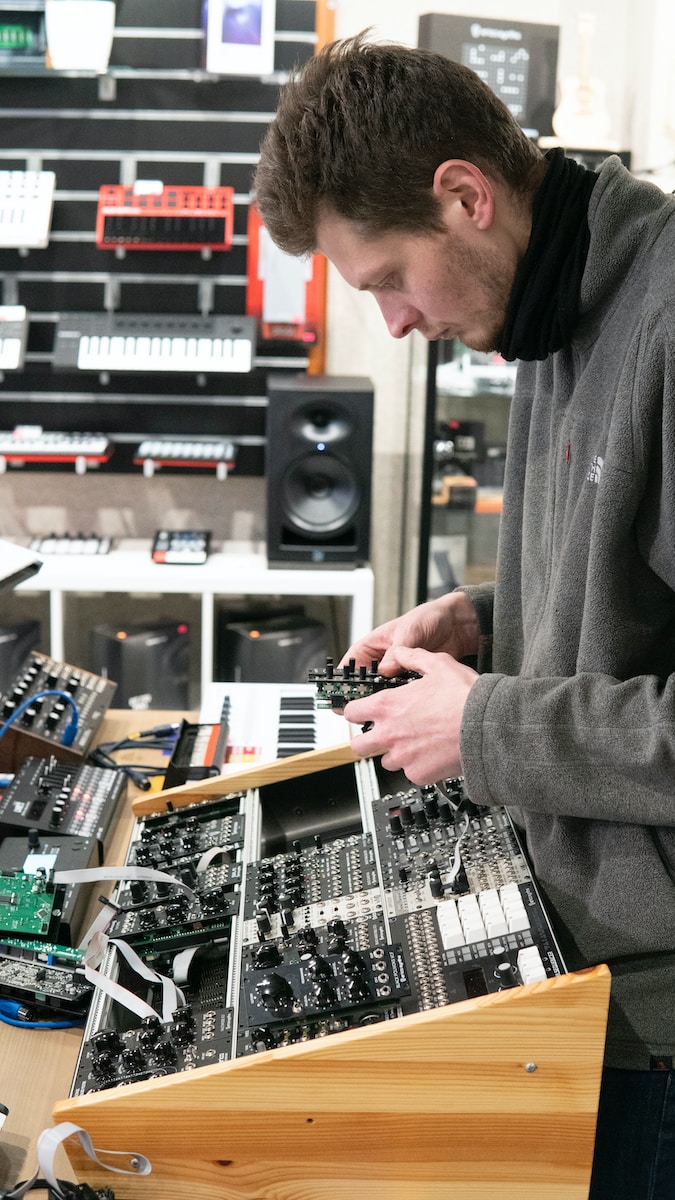
There are several synthesis methods used in sound design and music production, each with its unique approach and characteristics. In this answer, we will explain six different synthesis methods: Additive Synthesis, Subtractive Synthesis, Wavetable Synthesis, AM Synthesis, FM Synthesis, and Granular Synthesis.
1. Additive Synthesis:
Additive synthesis is the process of creating complex sounds by adding together simpler waveforms (sine waves, sawtooth waves, square waves, etc.) at various amplitudes and frequencies. This synthesis method allows for the precise control of the harmonic content of a sound, resulting in rich and diverse timbres. Additive synthesis can be accomplished through a dedicated additive synthesizer or through the use of advanced synthesizer plugins.
Advantages:
- Allows for precise control over the harmonic content of a sound
- Can create complex and evolving sounds by adding and manipulating multiple waveforms
- Can create unique and unusual timbres that are difficult to achieve with other synthesis methods

2. Subtractive Synthesis:
Subtractive synthesis is the process of creating complex sounds by filtering and subtracting harmonics from a complex waveform. Typically, subtractive synthesis begins with a rich waveform (such as a sawtooth wave or square wave) and uses a filter (low-pass, high-pass, bandpass, or notch) to remove unwanted harmonics. This synthesis method is commonly used in classic analog synthesizers and is often associated with warm and fat-sounding basses, leads, and pads.
Advantages:
- Can create warm and fat-sounding basses, leads, and pads
- Has a classic analog sound that is often sought after in electronic music production
- Can be easily controlled and manipulated using filters and other processing tools
3. Wavetable Synthesis:
Wavetable synthesis is a digital synthesis method that uses pre-recorded wavetables (samples of single-cycle waveforms) to create complex sounds. The technique involves morphing between different waveforms in a wavetable in real-time, allowing for dynamic and evolving timbres. Wavetable synthesis is commonly used in modern software synthesizers and has a unique and distinctive sound.
Advantages:
- Allows for dynamic and evolving timbres by morphing between different waveforms in real-time
- Can create unique and unusual sounds that are difficult to achieve with other synthesis methods
- Has a digital and modern sound that is popular in modern electronic music production

4. AM Synthesis:
AM (Amplitude Modulation) synthesis is a method of creating sounds by modulating the amplitude of one waveform (the carrier) with another waveform (the modulator). AM synthesis is often used to create metallic and bell-like sounds, as well as percussive sounds. The technique can be accomplished through a dedicated AM synthesizer or through the use of advanced synthesizer plugins.
Advantages:
- Can create metallic and bell-like sounds, as well as percussive sounds
- Can produce a wide range of timbres by modulating the amplitude of one waveform with another waveform
- Has a unique and distinct sound that is difficult to achieve with other synthesis methods

5. FM Synthesis:
FM (Frequency Modulation) synthesis is a method of creating complex sounds by modulating the frequency of one waveform (the carrier) with another waveform (the modulator). FM synthesis is a popular synthesis method in digital synthesizers and is often used to create bell-like sounds, metallic timbres, and digital-sounding leads.
Advantages:
- Can create complex and rich harmonics by modulating the frequency of one waveform with another waveform
- Can create bell-like sounds, metallic timbres, and digital-sounding leads
- Has a unique and distinct sound that is popular in digital synthesizers

6. Granular Synthesis (Sample-based):
Granular synthesis is a method of creating sounds by manipulating small, individual grains of a sound sample. The technique involves taking a sound sample and dividing it into tiny segments (or grains), which can then be manipulated and reassembled in various ways to create unique and complex timbres. Granular synthesis is often used in sound design and electronic music production, and can be accomplished through dedicated granular synthesizer plugins or software.
Advantages:
- Can create unique and complex timbres by manipulating small grains of a sound sample
- Allows for precise control over the timing and frequency of each grain, leading to precise and intricate sounds
- Can create unusual and experimental sounds that are difficult to achieve with other synthesis methods
In conclusion, these six synthesis methods are essential tools in the sound design and music production world, each offering unique and distinct sonic possibilities. The choice of synthesis method depends on the desired sound and the intended application, and often a combination of these methods is used to achieve a specific sound.










































































































